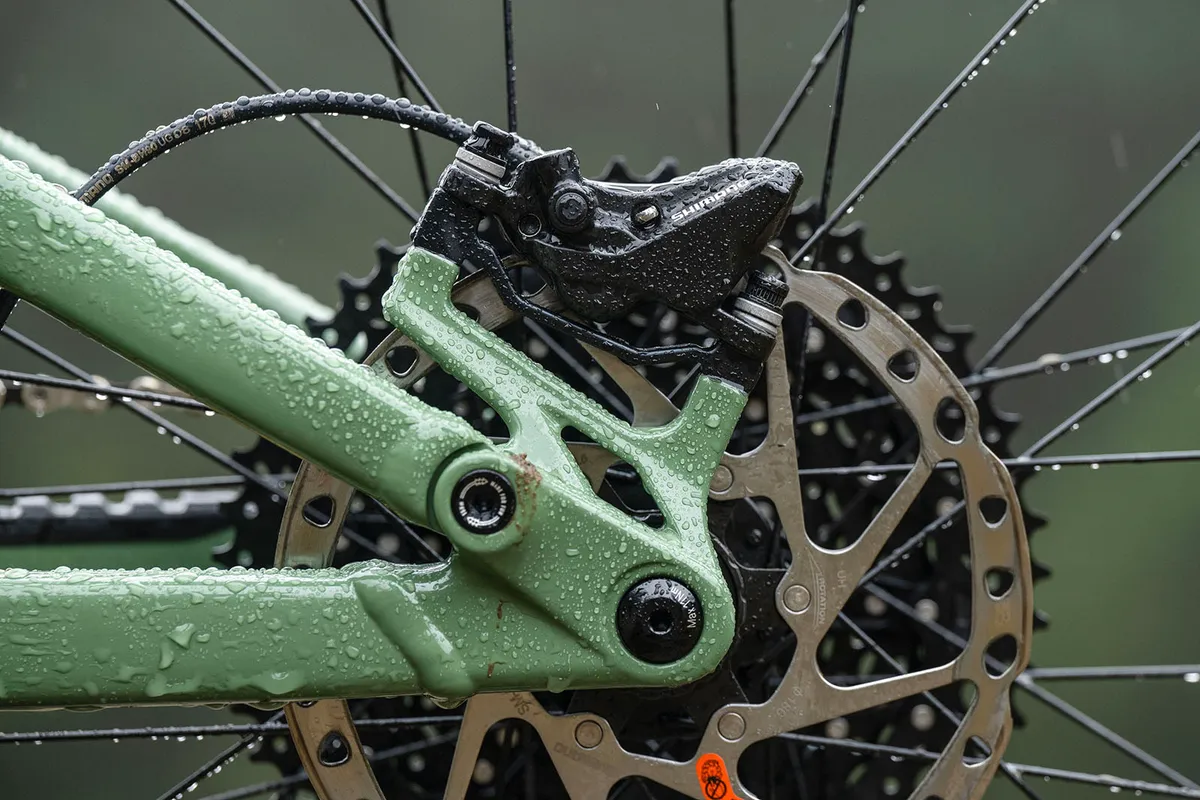Bleeding brakes can be very satisfying – and absolutely necessary when you have a spongy lever feel because of air in the system. But it’s not a panacea.
There are many and varied reasons why your brakes might not be performing as you desire.
Yes, they could require a full brake bleed, and we’ll look into those situations and symptoms later. However, it’s worth remembering that there may be more at play here and bleeding your brakes will not only cost you time, it might not solve the problem either.
So, before you reach for the syringe and brake fluid, here are a few things you should try first.
How do I find out if my brakes need bleeding?

An easy way to check this is to squeeze the brakes firmly and see if the feel when the pads hit the disc is firm or spongy.
In order to work out how they should feel, you can compare your brakes with a friend's and see if they feel similar. If you don’t have another bike with hydraulic brakes, a quick test is to check if the front and rear brakes feel roughly the same.
If your brake lever comes all the way back to the handlebar when you pull it, then it needs a bleed.
Another way to check if there is air in the system is to pop the bike up on the back wheel and squeeze the brakes a few times. Any air in the system will tend to rise to the highest point due to the effect of gravity on the brake fluid.
If a brake system is well-designed, the highest point will be at the top of the master cylinder reservoir on top of the brake lever. So, if small amounts of air are present in the system, they can sometimes be contained there, causing minimal interference to the braking circuit when the bike is flat and level.
However, if the bike is moved to the vertical position, by being hung up or when the rider is popping a manual, the air can move into the brake system, causing spongy braking or no brake action at all.
To check your brakes for hidden air pockets, simply pop the bike up vertically on the rear wheel and squeeze the brake levers. If the brake levers feel spongy with the bike in this position, there is air present in the system and the brakes need a bleed.
When is bleeding brakes unnecessary?

If you have a solid and consistent lever feel and the brake fluid is fresh, your brakes don’t need a bleed.
Here are some problems that are often confused as a symptom of brakes that need to be bled.
Squeaky brakes
Bleeding brakes will not cure squealing brakes. Vibration from a hydraulic brake is caused by part of the system vibrating. Some brake pads are more susceptible to causing a squealing noise than others – and squealing can be difficult to cure.
However, setting up your brakes correctly to ensure your pads are hitting the braking surfaces square, flat and at the same time is a great first step.
Lack of power
Bleeding brakes will not make them any more powerful because it won’t change the grip generated by the interaction between the discs and pads, or the way the power from your fingers pulling on the brake lever is multiplied by the hydraulic system forcing the pads into the rotor.
Bigger brake rotors, quality brake pads and beefier brake systems are all great ways to boost power.
Contamination
If the pads are worn out or the braking surfaces are contaminated, the brakes will not generate the friction and heat required to slow you down effectively.
If the lever feel is solid and consistent, but braking performance is poor, contaminated or worn-out pads could be the culprit.
A glaring clue is the sound when the spinning braking surface hits the pads: a metal-on-metal noise means the brake pads are worn down to the metal, and a loud squealing noise usually means the braking surface is contaminated.
What does a brake bleed do?

The purpose of bleeding a hydraulic brake is to make sure there is no air present in the system or to refresh the fluid.
Air can enter the system past the seals and leads to, at best, inconsistent lever feel – and, at worst, no braking capability at all. If the brake is undamaged and not worn out, a bleed should be all that’s needed to get rid of the performance-hampering air.
Brake fluid degrades over time, whether it is DOT or mineral-based. Repeated instances of heating and cooling can change the chemical composition of the fluid and it can become contaminated.
During use, microscopic pieces of metal and rubber from inside the brake system can make the fluid thick and slow to move, leading to pistons that are sluggish when returning to their resting position. A bleed with fresh fluid is the only way to restore proper performance levels.
There is no absolute rule for how often you should refresh brake fluid, but general guidance is to perform a bleed to refresh brake fluid annually.
Conversely, at the top level, it’s common practice for professional race mechanics at World Cups to do a full bleed on a brake setup every evening. After this, though, their work is not over; they leave the brakes to rest overnight, then perform a lever bleed in the morning when any bubbles of air have had time to settle.
Lever bleed – sometimes all you need

One way to eliminate air from hydraulic brakes is to perform a lever bleed. This will not refresh the fluid in the system, but could restore braking function if air is present.
A lever bleed involves topping up the fluid at the highest point in the system (which should be the brake lever), while leaving the calipers, discs and pads alone. Use a bleed pot or a syringe on the lever, while leaving the rest of the system sealed.
However, doing this could lead to overfilling the system if your disc rotors and pads are very worn, and the process may not be recommended by your brake manufacturer – so consult their guidelines first.




